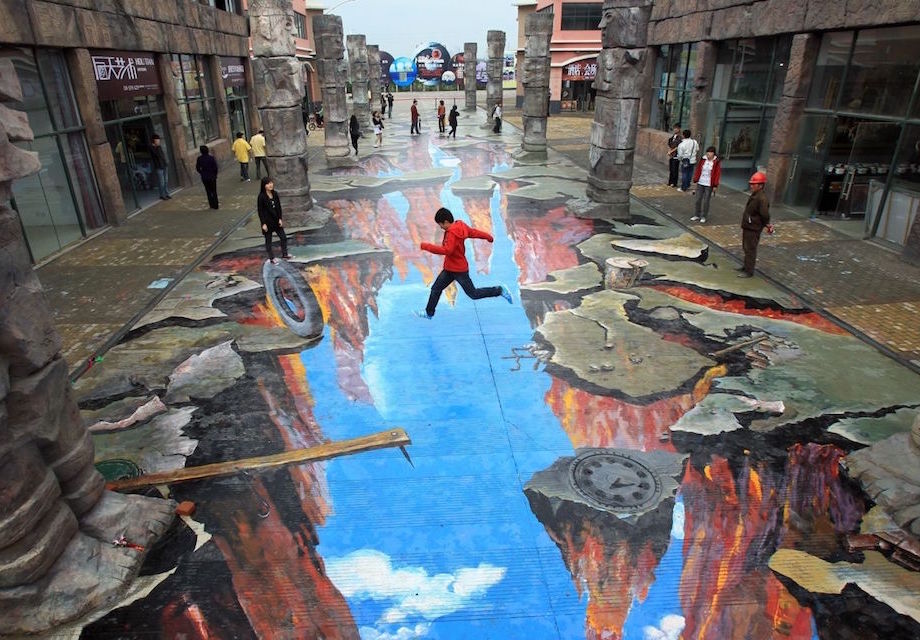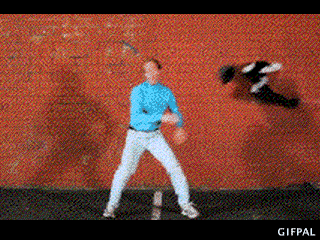Optic illusions cause your brain to ultimately focus falsely on objects. Because we have two eyes in different locations, the image focused on each retina is from a slightly different angle, providing us with our perception of 3D space (Privitera 2). The 3D perception is what is fooled in street art illusions. These illusions consists of painting graffiti along either sidewalks, walls, or streets. The illusions must be viewed from a specific angle in order to completely fool the brain.


Another example of an illusion is the famous magic trick. Magic tricks fool the brain by telling the eyes to focus on a specific object. Once the eyes are focused on said object the magician distracts the eyes with other objects to focus on while the main object is changed or altered in some way. However, it seems as if the main object is being changed before your eyes.
https://www.youtube.com/watch?v=j417h2Nw02U
http://illusionoftheyear.com


The last illusion I will discuss is called an ambiguous illusion. An ambiguous illusion is a type of drawing, sketch, or painting that takes on the image of multiple things. Your brain is tricked into seeing multiple images from one piece of art. However, most of the time it isn't until someone sees a different image than you that you recognize the art contains two images.

The first image can be viewed as either two old couples looking at each other or a man serenading a woman with a guitar. The second image is either a human skull or a couple kissing. The last image is either a side portrait of a face or the word "liar."
The way our perceptions and sensations can be fooled is both impressive and aggravating. The brain, though, is what also is being fooled. It was made to interpret what we see correctly in order to benefit the body. For example, if you see your favorite dessert, your brain recognizes it then checks to see if the stomach is hungry. If the stomach relays back to the brain that it is hungry than the you "crave" the dessert. However, these optic illusions are in no way beneficial. Your brain will look at graffiti illusions and tell the body to "avoid the giant alligator" or "you must walk around or on the bridge in order not to fall to your death." In addition, magic tricks temporarily distract in order to change the bigger picture. This leaves the brain puzzled. Ambiguous illusions force your eyes to see two separate images at the same time. Illusions bring truth to the phrase, "Things aren't always what they seem." Even some of the most trustful things, your eyes, can be easily deceived!
Other videos related to the topic:
https://hsutx.instructure.com/courses/3079/pages/week-4-readings-sensation-and-perception-3?module_item_id=89229
https://www.youtube.com/watch?v=miym86d-w4I
Citations
“Best Illusion of the Year Contest.” Best Illusion of the Year Contest, 2017, illusionoftheyear.com/.
Sensation and Perception Powerpoint
Privitera, A. J. (2015). Sensation and perception. In R. Biswas-Diener & E. Diener (Eds), Noba
textbook series: Psychology. Champaign, IL: DEF publishers. DOI:nobaproject.com.
Taryn, I love all the optical illusions you included in this. Some I had seen before but others I hadn't. I enjoyed learning the different ways that our brain can interpret things based on our two different views working together to become one. Which illusions do you prefer the tricks or the ambiguous?
ReplyDeleteI think it is very interesting how easily our eyes can be deceived by the art in the pictures that you listed. The importance of angles in the sidewalk art is particularly amazing to me. When I was in art class, I always had trouble being able to recreate angles that created depth, so I had to do it with color. Our vision is so easily fooled that it can be hard to tell what we are looking at sometimes. I think it is cool to see how some people have the skills and abilities to create illusions out of art, or slight of hand, that cause us to see things that may not be completely there.
ReplyDelete